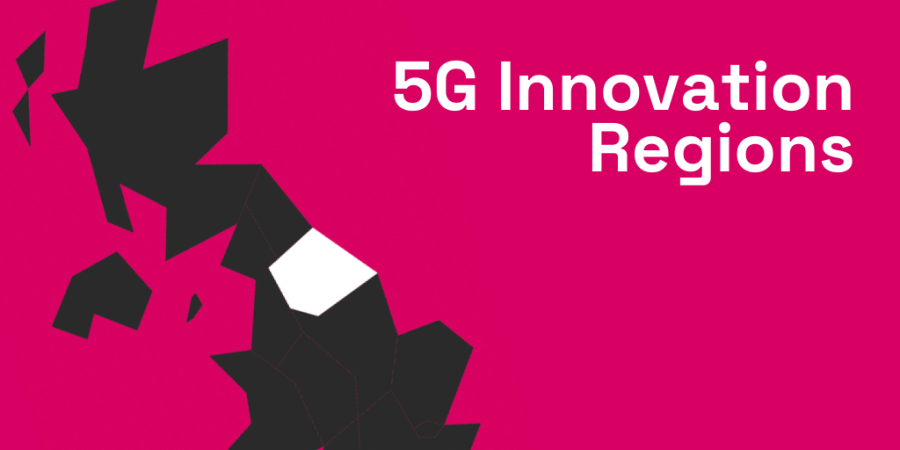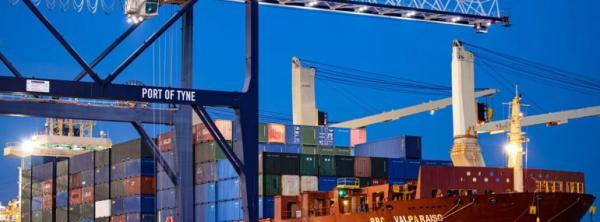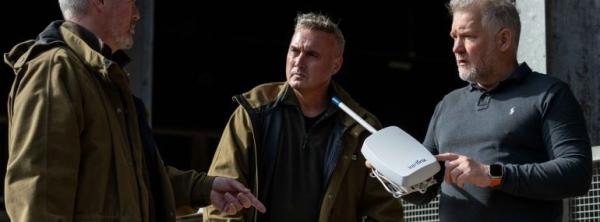
The 5G Innovation Region (5GIR) programme has seen 10 regions throughout the UK receive a share of £36m of funding as part of our wider programme to drive 5G adoption. With a focus on key sectors where there is local capability and opportunities, the projects aim to enable the UK to take full advantage of the transformative effect that advanced wireless connectivity and digital technologies can provide.
To help ensure that all regions can benefit from the work being done by the 5G Innovation Regions, UKTIN is inviting each of the projects to present to our Clusters forum. Most recently, Barney Smith, Programme Manager for the North East Combined Authority 5GIR and Janet Ross, the Digital Infrastructure and Delivery Manager at the North East Combined Authority shared their insights.
Please tell us about your 5GIR project.
Smith: Sunderland’s 5GIR bid was born out of a new North East Combined Authority, which is supporting 5G and advanced wireless connectivity as a key component of the regional digital strategy to build on the core strengths of the region.
We have four regional 5G projects:
- Smart Port: 5G-enabled port operations to improve port competitiveness and safety and reduce environmental impact
- Connected Intelligent Transport Systems: To improve road transport efficiency in our cities and between strategically important industrial locations (such as Nissan and the Port of Tyne);
- AgriTech: Advanced wireless sensor technology on farms to drive automation, increase efficiency, and improve environmental sustainability of farming using real data collected from on-farm crop, soil, livestock and environmental sensors
- Creative Industries: 5G-enabled event production and 360 degrees live broadcasting to keep our flourishing creative sector at the forefront of innovations, and as an attractor of tourism and inward investment
Ross: More broadly, through its 5G Future Connectivity programme, the North East Combined Authority wants to unlock economic and social benefit in the form of growth, improved productivity and product and service innovation using 5G and other leading edge connectivity technologies, putting organisations in the area at the forefront of digital innovation. We have six main priorities: Digital Inclusion, Digital Talent, Autonomous Transport, 5G Innovation Region of Excellence, Digital Economy and Digital Connectivity.
There are lots of exciting plans, including defining a minimum digital living standard for residents and helping them to access the skills, equipment, and support needed to use technology safely and confidently; creating a digital talent engine to grow the tech-talent pipeline, and establishing the North East as a major R&D Hub for autonomous logistics and passenger transport.
Why is this 5GIR project needed?
Smith: To contribute to establishing the North East as a national region of excellence for terrestrial and non-terrestrial 5G use-case development and adoption.
Ross: To harness widespread adoption, innovation and connectivity. These elements must not be viewed in isolation. They go hand-in-hand.
Led by an Elected Mayor, Kim McGuinness, and a Cabinet with leaders from the 7 local authority areas of County Durham, Gateshead, Newcastle, North Tyneside, Northumberland, South Tyneside and Sunderland; we are the second largest combined authority by area. The North East CA is home to 2 million people, 55,000 businesses and 3 cities, including vibrant towns and extensive rural and coastal communities. With our mix of geography, it will be no easy task! However, the region has an amazing array of assets to draw upon, including 4 universities with world class research facilities, 4 Catapults and 5 National Innovation Centres. And we’re working together to make the most of 5G.
What progress have you made?
Smith: Things are progressing well. For example, as a part of the Creative Industries project, 5GIR is installing a huge three-sided transparent LED surface in the city centre. It will showcase 360° live broadcasting technology to large audiences, generating tourism for the city and linking communities. We plan to achieve this by using a 5G Dual capability and creating a 5G broadcast solution for events ensuring a long-term legacy. So far, the design is complete and the groundworks have been accessed. The hardware has arrived and the content production and technical integration are underway.
Ross: Alongside the 5GIR work, we are building a single point of intelligence and data on the connectivity profile across the region so we better understand our regional connectivity disparities. We are working with operators and infrastructure providers to understand their commercial roll-out plans, as well liaising with government departments to inform their priorities for intervention programmes and voucher schemes.
What have you learned so far?
Smith: Green light prioritisation, central to the Connected Intelligent Transport Systems project, has the potential to significantly improve regional and national public transport and import and export logistics between Nissan and the Port of Tyne. In addition, by reaching out to 5GIR sectoral counterparts in other regions, we have benefitted from exchanging information and sharing learnings (for example, the Port of Tyne and Port of Belfast).
Ross: Some areas are well-connected, with plenty of connectivity options available. However, the North East has some very challenging geography: nearly 10,000 premises are falling short of the government’s universal service obligation of 10meg (although in our view 30mg is more appropriate, and we have about 30,000 that fall into this category). From a mobile perspective, 13% of Northumberland and 6% of Durham have no mobile coverage. If we want to build a region of excellence for 5G and other digital infrastructure, we need to level up and address the levels of disparity across the region. We want everybody to be able to access connectivity in the same way.
Head to the North East Combined Authority website to learn more, and find out more about the UKTIN Clusters Group here.









